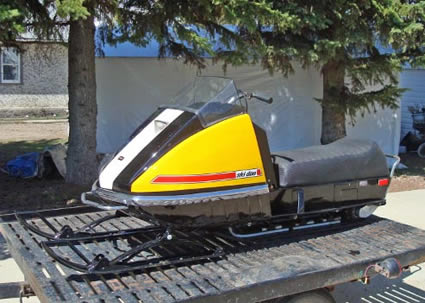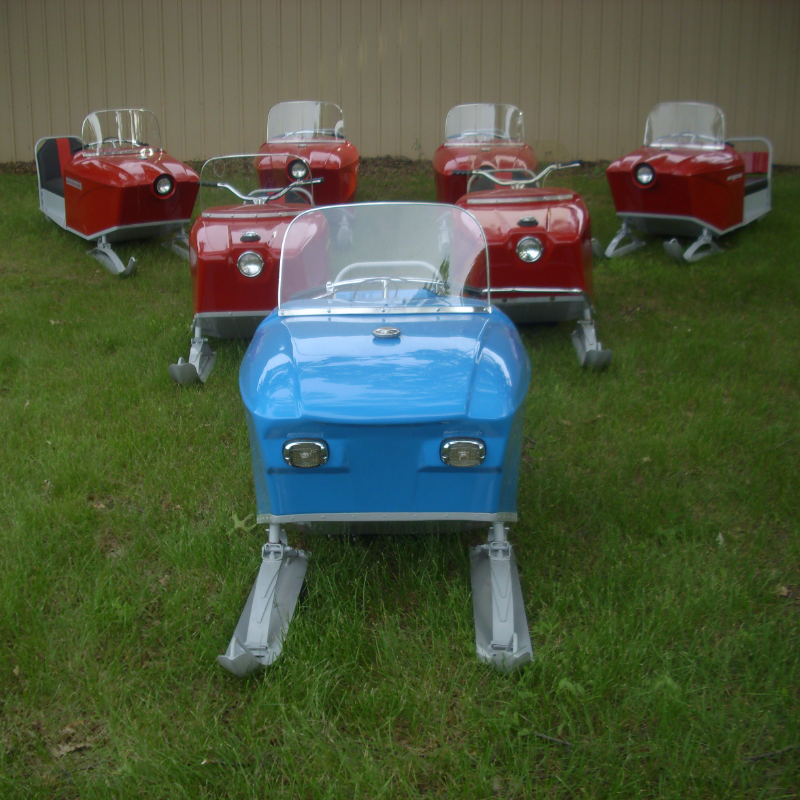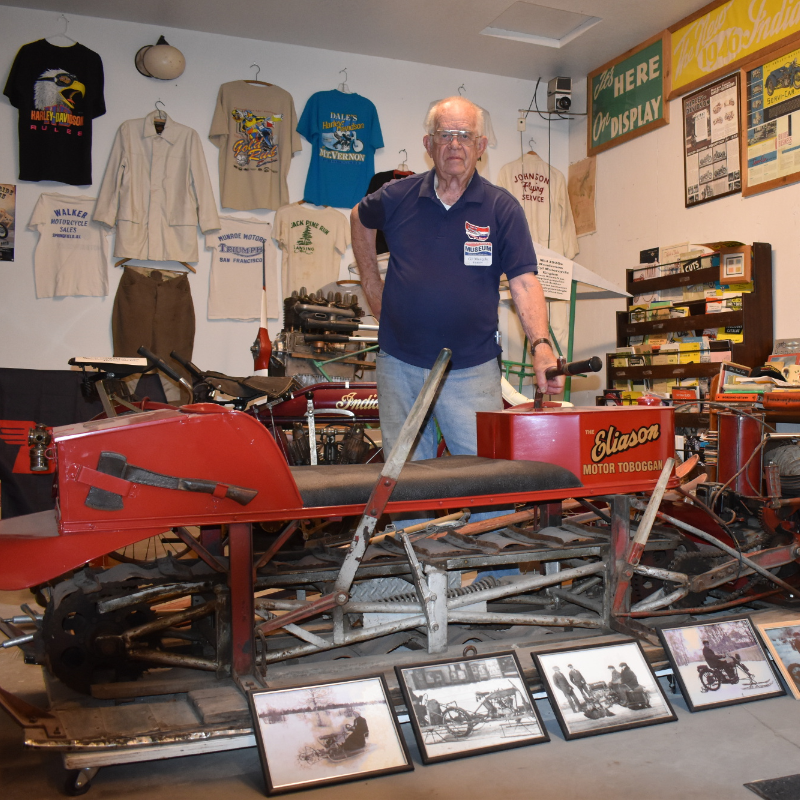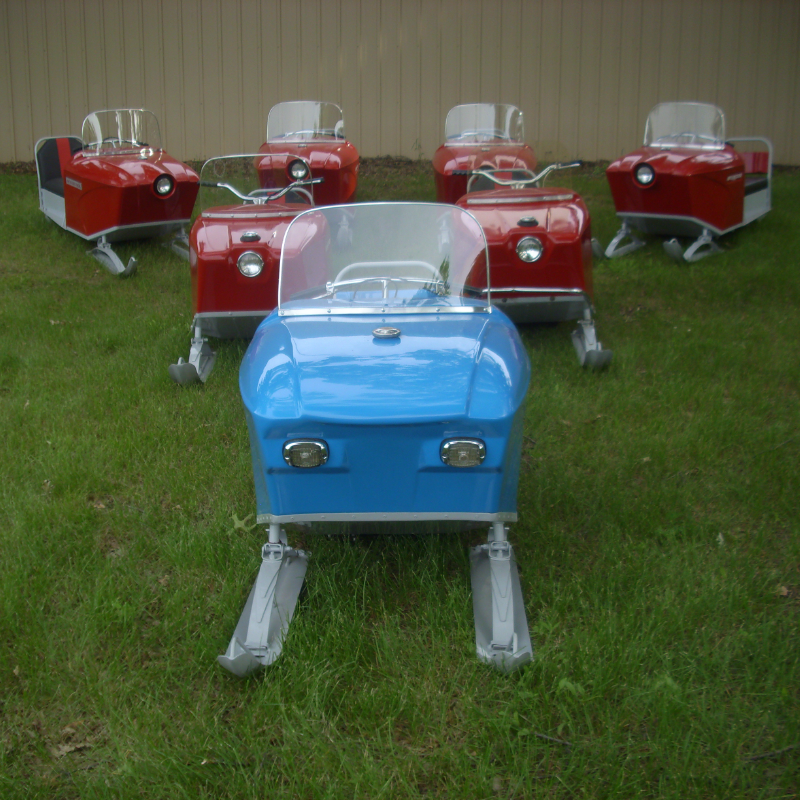Darrell Tarapaski of St. Paul, Alberta, is an industrious fellow. He recently restored a 1972 TNT Ski-Doo 292, which he purchased from a farmer in Wainwright after about a month of searching for that particular model. The work that followed was both in-depth and meticulous, and he put a lot of hard work into bringing the machine back to life.
“The motor wasn’t seized up,” said Tarapaski, “it was just rusted from sitting, the bearings and the crank shaft were rusted, and there were some parts missing from the motor.”
Aside from the painting, which he had done at a body shop, Tarapaski went about all of the repairs himself. He used the internet as a resource to seek parts that matched those of the original sled, preserving the authenticity that is so crucial to vintage enthusiasts.
“I got a seat in from a guy in New York City on the Internet,” said Tarapaski, “through a website for snow machines in Massachusetts. I have another sled, a 440 with the original seat, and the one he made for the 292 is identical so it’s almost exactly the same. The windshield was missing—I got a windshield from a guy who sells parts in Edmonton. I didn’t find everything all at once…I just kinda go to the vintage shows, and I met a fellow there who had a windshield and an air cleaner for it, so those were the last two things I needed to finish it. It is pretty much original except the seats are prefab (and) except for painting, but it looks identical. The decals I picked up from the Internet. Sled Heaven—I went there and that’s where I got most of the parts for the motor…I picked up a carburetor—the original was rusted out and I couldn’t get it apart, so I got the same kind off another machine.”
Work in progress
The procedure for revamping the sled sounded quite intensive, but Tarapaski seemed to enjoy every step of the process.
“I basically just strip it down to the frame where there is just a bare frame, and sandblast and weld it if it needs to be, and if it’s rusted out you can put new pieces in,” explained Tarapaski. “It only takes about a couple hours to strip something like that down—you strip it down, sandblast it, and if the chrome is good you leave it. So I stripped it down first and then I fixed the hood—it had a hole in it you could put your hand through—just on the sides. I ground the hood one section at a time down to the fibreglass and then put a new layer of fibreglass on. I let it dry and gave it a skiff with a grinder, reputtied it, then sanded it down to the original shape. So I did the whole hood, then I took it to the body shop. I took the engine apart—that was a little hard. I thought the piston was seized in the cylinder…I was able to loosen the sleeve a little bit, I was able to take the bottom half, the crank case off first and then I was able to push the piston. It was a little bit rusted. I got that all apart and then I put the crank shaft in the machine shop. I put the engine back together and then replaced all the bearings and crank suspension, crank case, so basically I put a new track on it.”
When it came time to repair the hood, there was a strategy involved.
“The hood was still intact,” said Tarapaski. “Basically when you sand it down, you only sand it down about an eighth of an inch, so you get to the fibreglass—it still has the original shape, so you cut out a patch for that shape and then put your fibreglass resin on the hood first. Then your fibreglass matting (goes) on that, it soaks through, then you brush some more on top so it stays in the same shape. It’s just a matter of putting the putty on so it is nice and straight. The hood has little details and ridges, so you just do each section at a time—don’t do the whole thing at once. So you can keep those high spots the way they are supposed to be.”
This is definitely not the first project of its kind that Tarapaski has undertaken.
“I’ve restored things before,” he said, “an old 28 Pontiac 3 Elan, a silver TNT. It’s something to do in my spare time. (I’ve been doing it) on and off for about 20 years. I always liked TNT so I thought I would see if I could find one.”







